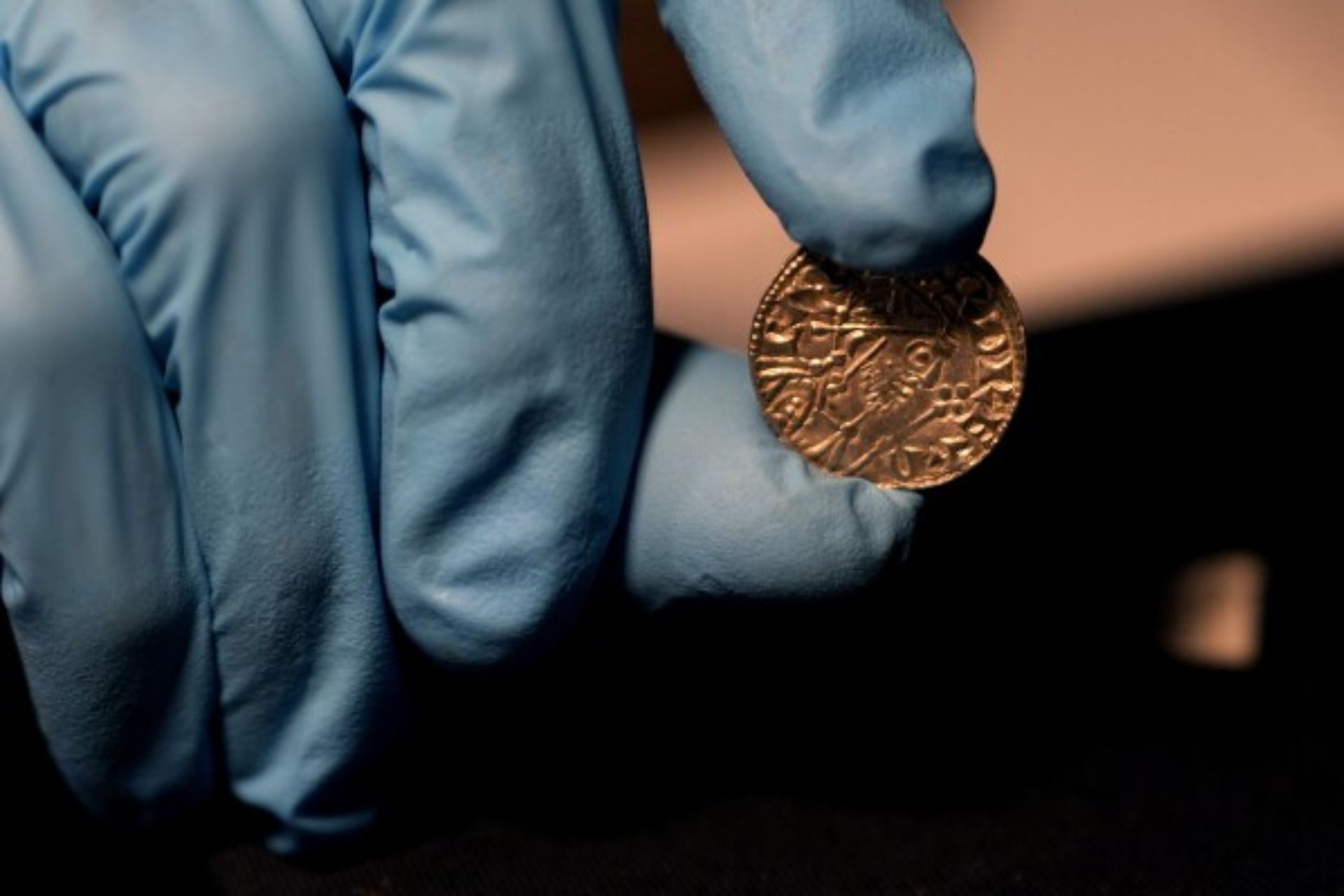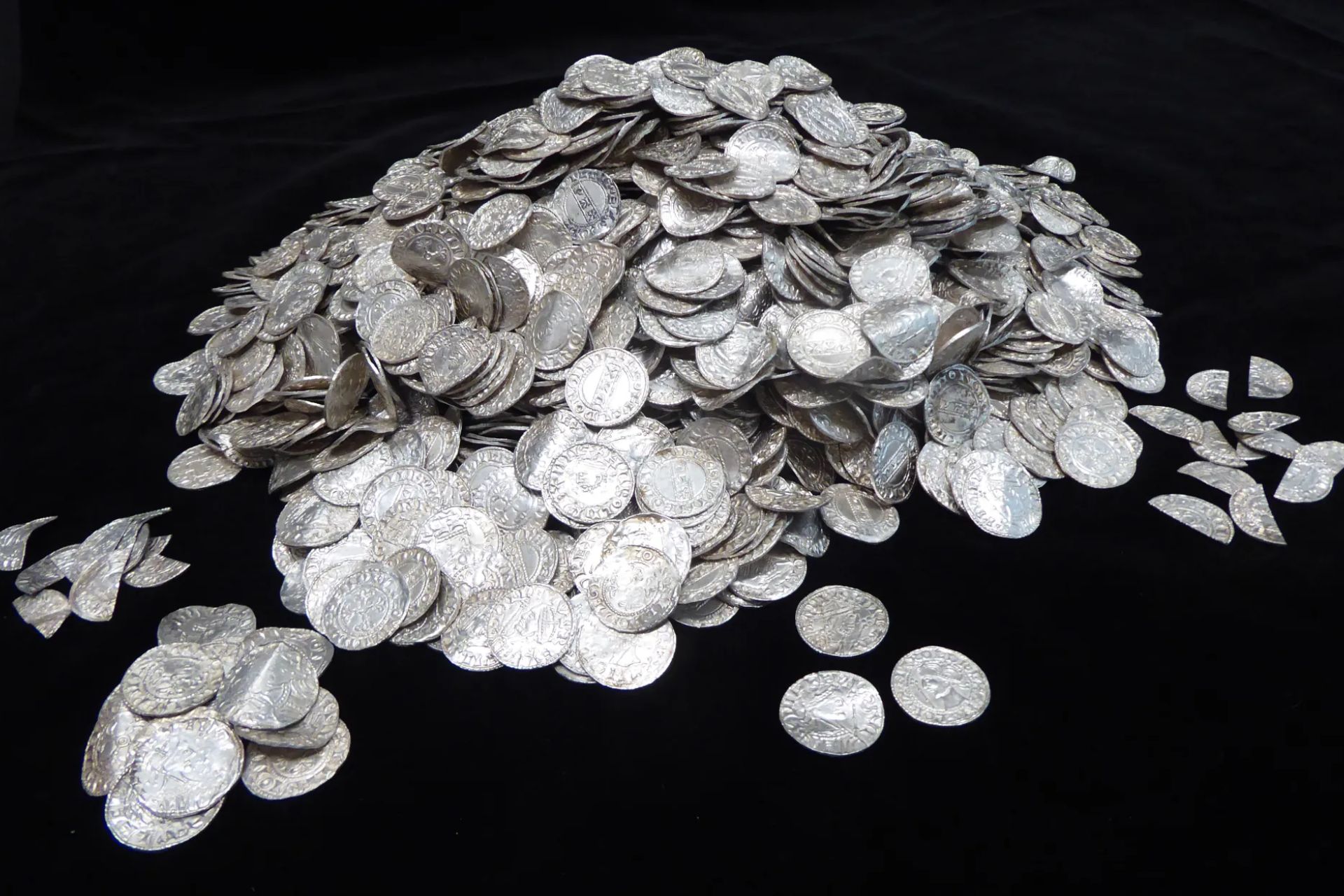Image Name: Norman Silver Coin Hoard
Image Credit: Art News
Recently, a remarkable archaeological find has been reported to have grabbed the headlines of the world – Norman-era silver coins found in Britain. Valued as Britain’s most significant and valuable treasure trove, this hoard is dated to the Norman Conquest. This discovery gives the interesting window into the medieval times in England and the turbulent aftermath that followed the time of William the Conqueror in 1066. The growing interest in history over the British soil continues to create excitement and more meaningful ties to a now lost time.
A Changing Tide in British History
This coin hoard is important in that the context of the Norman Conquest has to be brought back into memory. The Duke of Normandy, William the Conqueror, crossed the English Channel and defeated King Harold II in the Battle of Hastings in 1066. Thus, the Norman rule came about, an era of wide cultural and societal changes in England. The Norman Conquest laid a foundation upon which modern Britain was built as the result of its alteration in governance, language and the legal framework. Here stands a silver coins treasure hoard-a material testamony for this changing times.
A Silver Coin Treasure Hoard
Not often in history were treasures of the kind in value of these artifacts so much unearthed. Thousands of silver pieces were recovered from an excavation due to careful planning. Although some such finds have been documented in the past, what is important here is not only the scale but the state of preservation as well. It may well emerge as the largest Norman period coin hoard ever excavated, and the value in millions could make this Britain’s most valuable treasure find so far.
What Makes This Hoard Special?
The many variables which make this treasure uniquely rich and valuable are including, the coins having dates exceeding over a thousand years to their mintage dates from Britain; money contained silver during that period while, by their near-minted condition, they might have been hidden well away in any case from natural or even human-made elements. The hoard is a period of very important political change, so these coins are not only valuable pieces but also historically important ones. Collectors, historians, and institutions will seek these pieces to analyze for insight into Britain’s medieval economy, craftsmanship, and trade networks.
The Historical and Monetary Value of Silver Coins
These silver coins most probably represent much more than their monetary value. As artifacts, they can perhaps help historians understand the dynamics of trade, wealth distribution, and political alliances within Norman England. Coins are often known to bear images of ruling monarchs and are essentially a form of propaganda by which royal power is asserted. This hoard may bring out information on the legitimacy that William sought in his newly conquered lands. For historians, these coins can speak to regional governance, taxes, and much more complex relationships between the ruling class and local communities.
Role of Treasure Troves in British Heritage
Britain is known to have a rich history of treasure finds, partly due to the long-standing laws surrounding treasure discoveries. According to British law, any valuable find over 300 years old qualifies as treasure and has to be reported to the authorities. Treasuries such as this give windows into treasure houses for people to attain their heritage. The British Museum and other establishments have not only had ample time but have taken to preserving them and putting them up for viewing as means of learning. Finds such as this serve to show just how marvelous history has been in store waiting around for the archaeologists, or rather anyone, to unearth.
Medieval Economy and Everyday Life Understandings
The coins from this period have more to them than economic value; they reflect daily life during the Norman regime. Silver was valuable and could buy for one day or week, a week of labour for most people. What this treasure trove reveal is what people cherished and traded for and kept as treasures. The discovery also points to the medieval banking practice of asset preservation, which would reveal how people saved or hid their assets to avoid theft or plundering due to war. For modern history and archaeology enthusiasts, this hoard has a great story to tell of the struggle of daily life, economic practices, and survival of an era defined by conquest and adaptation.
Image Name: Historic Norman Coins Uncovered in Britain
Image Credit: AP News
Speculation on the Origins of the Hoard
Although the origin of the hoard is not known, it is thought to have been buried as an act of protection in the event of invasion or confiscation. Considering the timescale with the Norman Conquest following the turmoil, there could have been an instance where people buried their belongings for protection against a change of rulers and possible invasion of foreign forces. Some even believe these coins were owned by an English nobleman who fled during the Norman invasion or wanted to save his wealth during the subsequent wars. Each coin is a piece of the puzzle and allows experts to explore how people protected their resources amid societal upheaval.
Public Fascination and the Appeal of Treasure Hunts
Treasure finds always find a way to capture people’s imagination, and there is no exception in the case of this discovery. Enthusiasts, as well as historians, are attracted to stories concerning lost artifacts and hidden treasures because these stories create mysterious and adventurous narratives. Thus, the public’s enthusiasm for a treasure find is an expression of a more general desire for a connection with the past and the unearthing of relics that survived from the past. The hobby of metal detecting in the UK has resulted in a steady stream of finds, so it is a fun hobby with the possibility of really finding historical treasures.
Future steps for the hoard
It would then be presented to research, conservation and public display. Scholars shall analyze the coins for place of origin, their pureness, and whether historic. Maybe some shall get to museums where everybody should see them and learn on the Norman era in them. The treasure also benefits British culture heritage because, through it, a people living in the present connect to origins far away.
Conclusion
The Norman-era silver coin hoard is much more than a historical discovery; it is a door into understanding what people’s lives were almost a thousand years ago. Britain’s most valuable treasure find to date, this hoard speaks volumes of its rich and layered history in the country. For modern Britain, it is a reminder of the lasting legacy of the Norman Conquest, a period that left an indelible mark on British society. For history and archaeology enthusiasts, this find is a symbol of the excitement of discovery and the boundless potential of what could still be hidden beneath the surface, waiting to reveal further secrets of the past.





